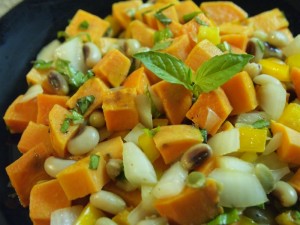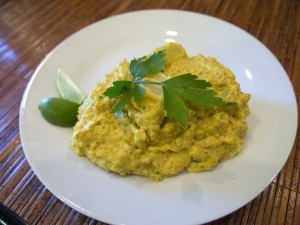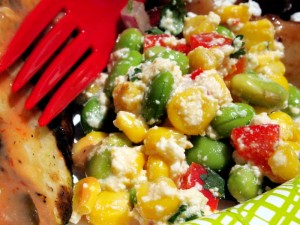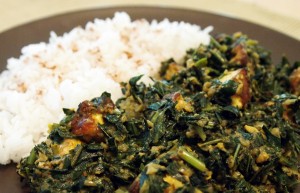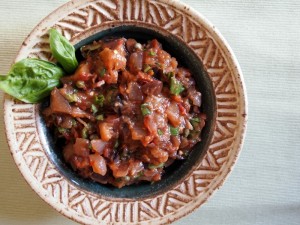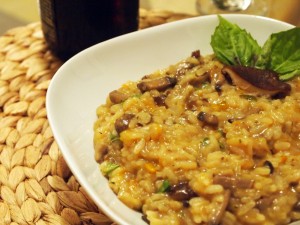This Peruvian-inspired hot pepper sauce, or ají, is a great way to add some tangy heat to your meals. Ajíes are commonly used as a tabletop condiment, but they also make a nice spicy base for sautes and stir fries. As a commenter below pointed out, aji is actually the word for a species of chili pepper, but we found the term to be used pretty interchangeably for any pepper-based spicy table condiment in Peru and Ecuador.
We made this ají with seasonal peppers, including serranos, hinkelhatz, and sweet Ringos, from Johnson’s Backyard Garden in Austin, TX. We seeded about half of the hot peppers, but feel free to seed more if you don’t like a lot of heat, or less if you like more!
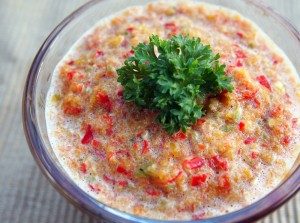
JBG Ají
Ingredients
- 6 ounces mixed hot peppers, topped and (optionally) seeded
- 1 large Ringo pepper, chopped (or half of a yellow bell pepper) and seeded
- 2 medium cloves garlic
- 1/4 cup key lime juice
- Salt to taste
Preparation
- Combine peppers, garlic, and lime juice in a food processor or blender and process until thoroughly chopped.
- Season to taste, but be careful because those tastes will be hot!
Store in a glass container for up to 2 weeks in the refrigerator (though you’ll probably use it up before then).

